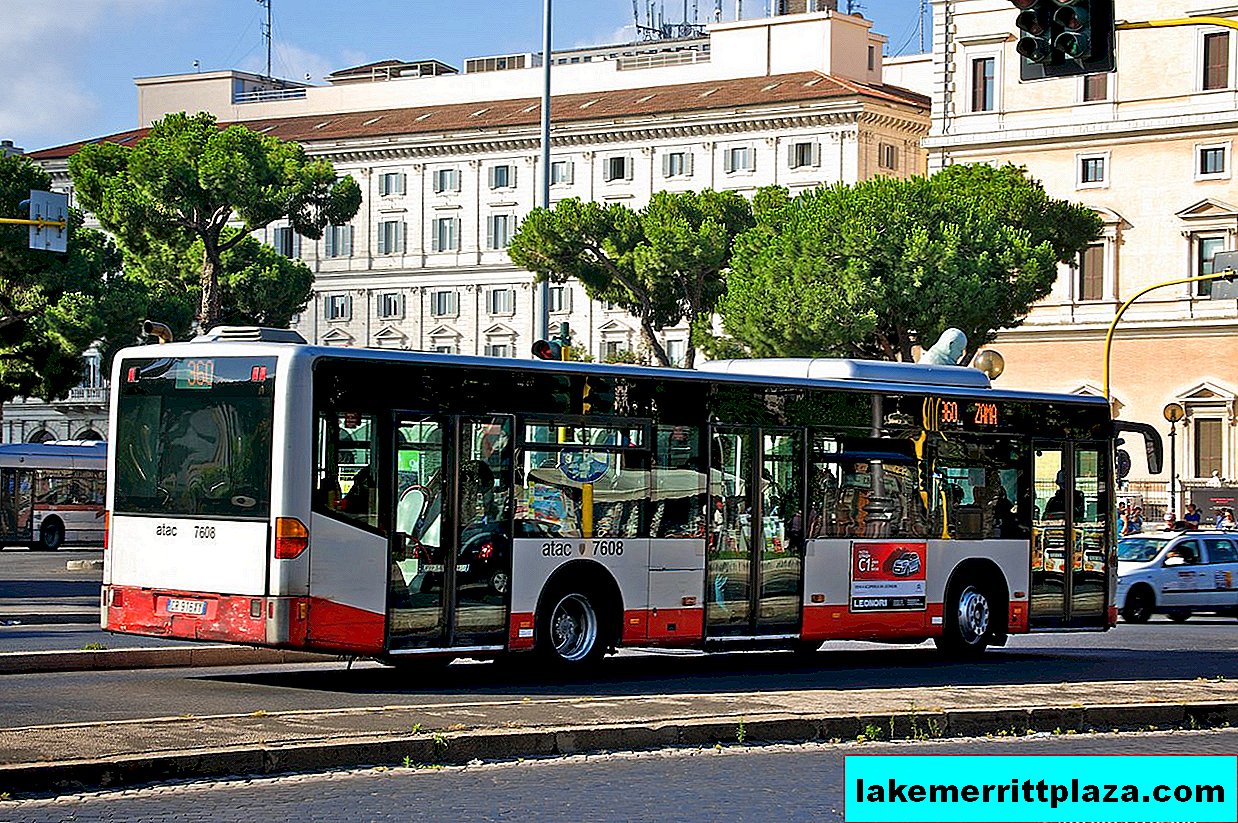The Lateran Basilica is the Cathedral of Rome, "Basilica maior" with the bishop's chair and the throne of the pope. Here is one of the ancient Christian relics - the Rock of Santa (Sacred Stairs), along which Christ ascended to the judgment of Pilate.

Basilica of St. John the Baptist on Lateran Hill (Basilica di San Giovanni in Laterano), photo R4all
The Cathedral of St. John the Baptist on Lateran Hill or the Lateran Basilica (Basilica di San Giovanni in Laterano - Basilica of San Giovanni in Laterano) meets with a colossal oriental facade, which was built in 1735 by Alessandro Galilei. Huge statues crown the balustrade of the temple. The majestic figures of the Savior and the apostles froze against a clear Roman sky.
Five gates lead inside the temple. The central portal (the bronze doors of Curia Julius) has been preserved from ancient times - from the first basilica built in 324. The extreme gates on the right are called the Jubilee. They are opened on anniversary years, once every 25 years.
Interior decoration

Interior of the Basilica, photo by Paolo Capoccia
You enter the main nave of the basilica through the narthex in which a statue of Emperor Constantine I is installed. The first thing you notice when entering the temple is the luxurious marble floors of Cosmatesco and the magnificent carved ceiling. The main nave dazzles with whiteness of the decor of walls, marble statues and slender columns. Heavy and massive gold vaults contrast with it underlined by arrogant luxury.

Pope Chair, photo by Matthias Jiury
At the back of the temple, in the apse, is the Pope’s chair. The spherical vault of the apse above the papal throne is decorated with a huge iconographic mosaic. In the center of the composition is the figure of the Savior. This impressive golden mosaic was created in 1291. It was performed by two Franciscan monks - Torriti and Camerino.

Flooring in the Basilica, photo by Marcia Salviato
Initially, a lot of treasures, gifts of emperors and noble persons were collected in the basilica. All the wealth of the cathedral was plundered by barbarians, then an earthquake occurred. Gradually, the temple fell into decay, and in 1377 a long multi-stage reconstruction began. The antique structure of the basilica was preserved, and many elements of the decoration belong to the early periods.

The walls of the temple are decorated with sculptures of 12 apostles, photo edwin. 11
Until the beginning of the 18th century, empty niches were located on both sides of the nave. In 1703, the figures of the apostles for the basilica were ordered to seven sculptors. Today in the niches are twelve statues of saints, made in the Baroque style. These are powerful sculptures above human growth - naturalistic and expressive.

Golden canopy above the main altar, photo by Marcia Salviato
Above the main altar there is a high Gothic golden canopy. They say that in the silver relics hidden in the upper tier of this building, the heads of the holy apostles Peter and Paul are kept. Here is a Catholic tradition ...

Central portal (bronze doors of Curia Julia), photo mokeycokes
Relics
Several especially valuable Christian relics have been preserved in the church: a part of the Vestments of the Virgin, a piece of sponge, sprinkled with the blood of Jesus (they used to drink vinegar from this sponge of the crucified Christ). The altar of the Holy Communion contains a unique artifact - a particle of a cedar table, which held the Last Supper.
The main, most revered relic is located in the chapel of the Holy of Holies, adjacent to the baptistery of the cathedral. There, under a wooden platform, is hidden the Scala Santa staircase of twenty-eight steps, marked by traces of the blood of Christ.
Cloister

Courtyard
In the cloister, we saw all the same amazing floor mosaics "cosmatesco". It is said that the Cosmati brothers designed the patio of the Lateran Basilica with their own hands. The courtyard is surrounded by arched galleries on elegant columns. There is a well in the middle of the patio. Galleries exhibit various ancient archaeological finds. The courtyard of the temple is preserved in the pristine appearance of the XIII century.

Basilica of St. John the Baptist on Lateran Hill (Basilica di San Giovanni in Laterano), photo by paolo dell'angelo
How to get there
Take the metro to S. Giovanni Station.
How do I save on hotels?
Everything is very simple - look not only at the booking. I prefer the search engine RoomGuru. He is looking for discounts at the same time on Booking and on 70 other booking sites.








